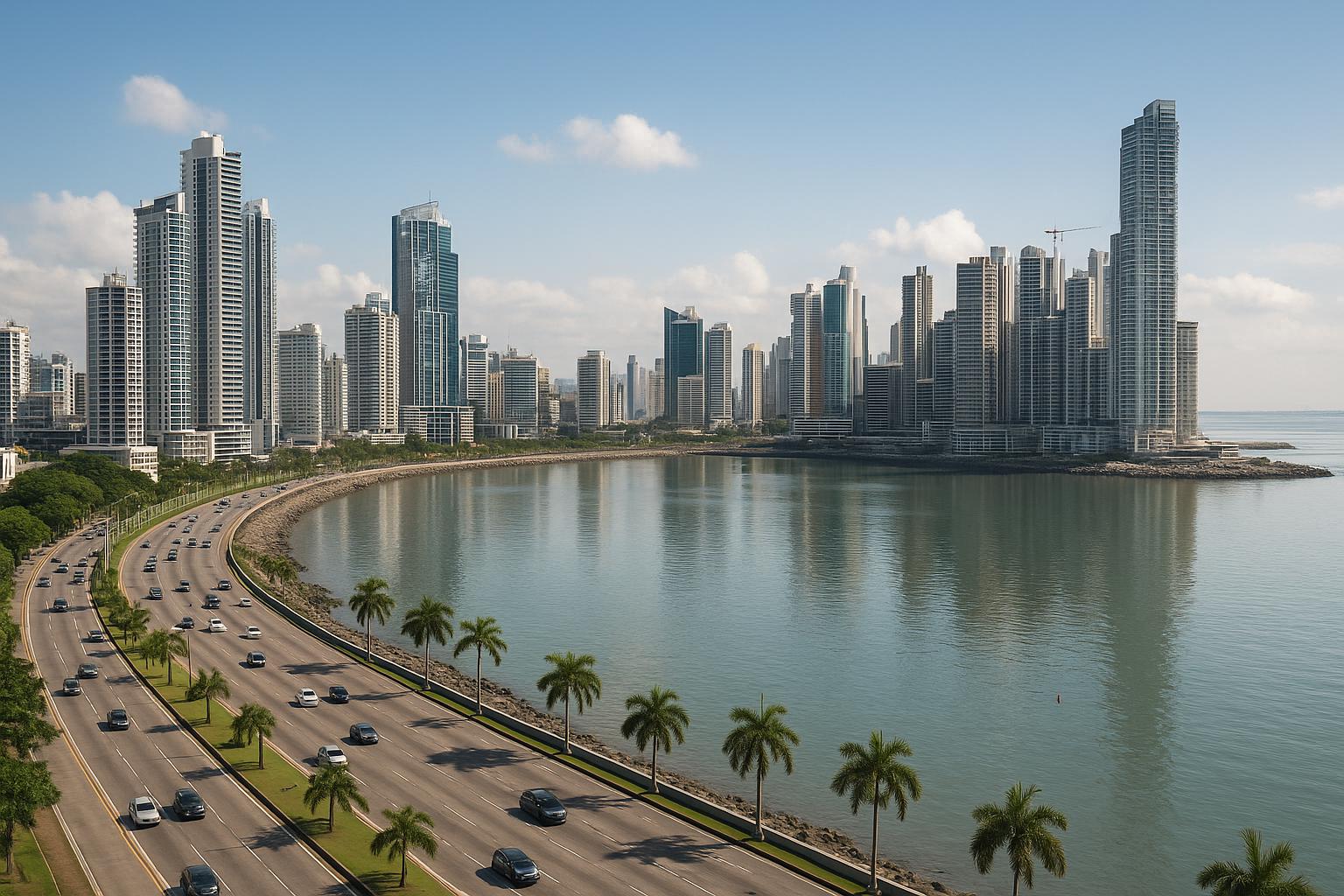Contents
Overview of Panama City
Panama City, the vibrant capital of Panama, is a key financial and commercial hub in Central America. Located on the Pacific coast at the entrance of the Panama Canal, it serves as a crucial juncture for trade and travel. Known for its modern skyline punctuated by impressive skyscrapers, the city also boasts a rich history that dates back to its founding in 1519.
Historical Context
Panama City played a significant role during the Spanish colonial period. Originally established as a starting point for expeditions into Peru, the city was later destroyed by pirate Henry Morgan in 1671. The site, now known as Panama Viejo, remains as a historical landmark with ruins that give insight into early colonial architecture and city planning. These ruins serve as a testament to the city’s endurance and historical relevance. Visitors today can walk among these ancient structures and imagine the city as it was hundreds of years ago, bustling with trade and colonial life.
Economic Importance
Panama City’s economy is intricately linked to the Panama Canal, a crucial maritime route that greatly influences global trade. The canal has facilitated maritime transport since its completion in the early 20th century, becoming a backbone for international logistics. The city’s strategic location has also made it a hub for international banking and commerce. Many multinational corporations have established regional headquarters here, taking advantage of the city’s connectivity and economic policies. These favorable conditions have fostered an environment ripe for economic growth and business opportunities.
Panama City is a melting pot of cultures, reflecting a diverse demographic influenced by its colonial past and international significance. The city’s Casco Viejo district, a UNESCO World Heritage site, is renowned for its colonial-era landmarks and vibrant cultural scene, combining Spanish, French, and early American architectural styles. The annual Panama Jazz Festival is a highlight, attracting international musicians and jazz enthusiasts. This cultural amalgam is evident in the city’s cuisine, music, and art, making it a fascinating place for cultural exploration.
Transportation and Infrastructure
The city’s infrastructure supports its vibrant economy, with modern facilities in place for both residents and international visitors. The Tocumen International Airport is the largest and busiest in Central America, offering connections across the continent and beyond. Public transportation within the city includes an extensive bus network and a metro system, enhancing mobility and accessibility for its population. This robust infrastructure underpins the city’s status as a regional transport center, offering convenience and efficiency to travelers and commuters alike.
Natural Attractions and Biodiversity
Apart from its urban attractions, Panama City offers proximity to diverse natural landscapes. The nearby Metropolitan Natural Park provides a lush rainforest experience right outside the city, while the Panama Canal offers opportunities to observe one of the most significant engineering feats of the 20th century. Additionally, the nearby rainforest is home to an abundance of wildlife, attracting nature enthusiasts and researchers. These natural spaces offer a unique balance to the city’s urban life, allowing residents and visitors to reconnect with nature amidst a bustling metropolitan ambiance.
Investment Opportunities
For those interested in business and investment, Panama City presents numerous opportunities. The government has implemented several incentive programs to attract foreign investment, particularly in sectors like tourism, real estate, and finance. The Colon Free Zone, located near the city, is one of the largest free-trade zones globally and plays a crucial role in the region’s economy. Investors are drawn by the favorable business climate, low taxes, and strategic location, opening avenues for growth and innovation in various industries.
Impact of Earthquakes
While Panama City is not primarily known for seismic activity, it is not entirely immune to the effects of earthquakes. The region’s location on the Isthmus of Panama means it could potentially experience tremors from more active neighboring areas. Historically, Panama City has experienced minor seismic events, though they have not caused significant damage. Nonetheless, building codes and infrastructure investments have increasingly considered the potential impacts of seismic activity. This proactive approach ensures the city remains resilient and prepared, safeguarding its inhabitants and maintaining structural integrity in the face of possible natural disasters.
Conclusion
In conclusion, Panama City is a dynamic destination offering a blend of historical charm and contemporary amenities. Its strategic importance, economic vitality, and cultural diversity make it a key city in not only Panama but also Central America. For more information on planning a visit or understanding its economic landscape, readers can explore additional resources available online. The city continues to develop and thrive, attracting visitors and investors with its unique combination of history, culture, and economic opportunity.
